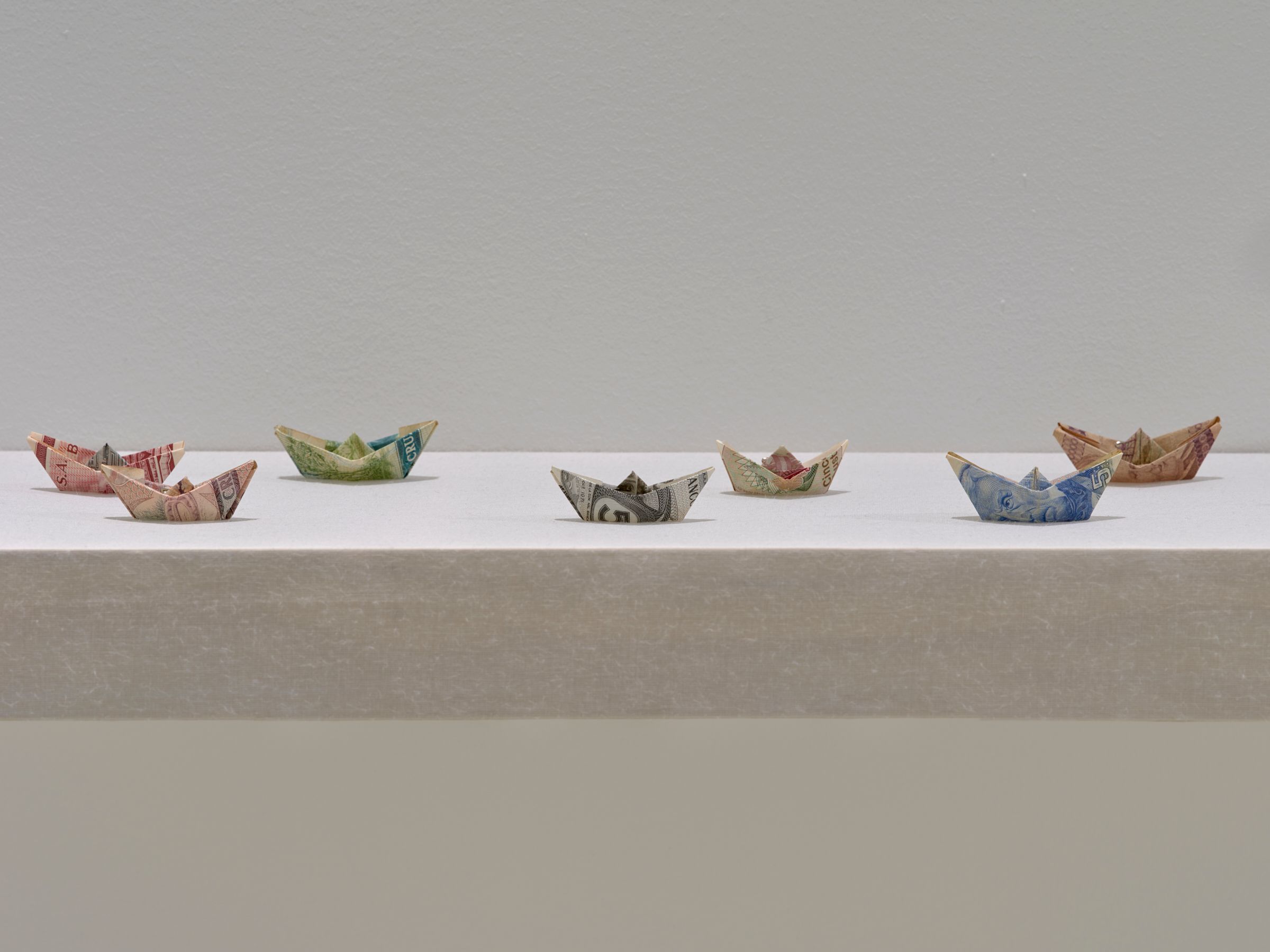
How Carla Zaccagnini turns hyperinflation into art
The Argentine artist shows the impact of the dollar and inflation on life in Latin America.
Carla Zaccagnini has a strange hobby — collecting banknotes of currencies that no longer exist — such as the Brazilian cruzeiro, which she keeps duly wrapped in cellophane. She picked up the habit during childhood, in the 1970s and 80s spent between Argentina and Brazil, when hyperinflation drove people to hoard U.S. dollars as the local currency depreciated at rampant rates and forced supermarket employees to spend the day replacing price tags as prices went up.
Exploring how inflation and currency devaluation have had (and continue to have) an impact on the daily lives of millions of people, especially in Latin America, is the main theme of this renowned Argentine artist's first solo exhibition in the United States.
Organized by Amant, an experimental art center in Brooklyn, New York, the exhibition Cuentos de cuentas/Accounts of Accounting from Zaccagnini highlights, through personal memories, documents and intimate moments from her family archive, the economic asymmetries and co-dependent relationship between Latin America, the United States and Western Europe.
"My initial idea for this exhibition was simply to draw up a list, painted on the wall, of all the coins that have disappeared since I was born. Currency is one of the identities of a country, like the national anthem. Can you imagine if you could change the anthem every three years?" the Argentine-Brazilian artist explained to The New Yorker.
Currency is one of the identities of a country, like the national anthem - can you imagine if you could change the anthem every three years?
Instead of making a list, Zaccagnini, who is currently a professor at the Royal Danish Academy of Fine Arts, opts to turn missing Latin American currency notes, mostly acquired through Mercado Libre (the eBay of Latin America) into works of art. Specifically, into little paper boats.
“It’s the first thing you learn to do with paper,” she told The New Yorker, in reference to the installation Fleeting Fleet.
“It’s something I kind of do when I’m bored and I have a paper in my hand. I make little boats."
The idea for the exhibition is closely linked to memories of her childhood, a time marked by economic instability and hyperinflation. In the 1980s, the Brazilian dollar was constantly changing its name as it was devalued. Before 1986, it was called ‘cruzeiro,’ later ‘cruzado,’ until 1989, when the currency was devalued again, and a thousand cruzeiros became a ‘cruzado novo.’ According to one of the documents on display in the exhibition, a current Brazilian 'real' would be the equivalent of 2,750,000 billion of the original reals used when Brazil became independent, in 1822.
In addition to the many banknotes that passed through her hands, Zaccagnini recalls that her father, a car salesman who also defined himself as an inventor, even created a machine that made it possible to determine from the ink whether U.S. dollar bills were genuine or not — a very useful invention in a country with such a widespread black market as Argentina.
RELATED CONTENT
The ability to forget
In 1981, when the exchange rate was favorable, the artist's parents decided to move to Brazil, where their savings yielded more and they could buy a
house with a swimming pool. For the move, the artist recalls that her grandmother sewed her mother a jacket with many compartments so she could pass wads of bills across the border without arousing suspicion. Her father had also hidden $100 bills all over the house, even behind the bidet, and one day she found him sitting on the toilet trying to retrieve the ones that were ruined by a water leak.
"Zaccagnini's works explore the migrations, trade and resource extraction caused by foreign intervention that contribute to the fragile economic environment and a constant sense of disappointment that persists throughout the region," observes Ruth Estevez, curator of the exhibition. In telling these stories, "Zaccagnini casts herself in the role of unreliable narrator, presenting fiction as fact and challenging conventional notions of objective truth. She asks questions such as: ‘What can history be and how is it written? What do we choose to remember? Do we risk anything by looking back? What are the objects through which we strive to understand the past? Which journeys do we choose to erase and which do we intentionally fictionalize?’
In the words of Zaccagnini: "history is not composed through memories, but through the ability to forget.”
The exhibition is accompanied by original texts in Spanish and English that the artist put together in a book of the same name Cuentos de cuentas,
published by Amant and the K Verlag foundation in Berlin.
Cuentos de cuentas brings together five stories from Zaccagnini's childhood in Brazil and Argentina in the 1980s that are told by a narrator who questions her own ability to adequately recall what happened.
Each episode is structured around a specific object (a tent, a flask, a vest) that is instrumental to enabling secret economic transactions. Although told with a childlike innocence and a detailed attention to material reality, the stories, interspersed with childhood drawings, clippings from news magazines, and personal photographs, illuminate a context in which the U.S. dollar dictated cash money economics. Ultimately, they make the reader wonder: How can we really determine the value of something, and how do we distinguish what is true from what is false?











LEAVE A COMMENT:
Join the discussion! Leave a comment.